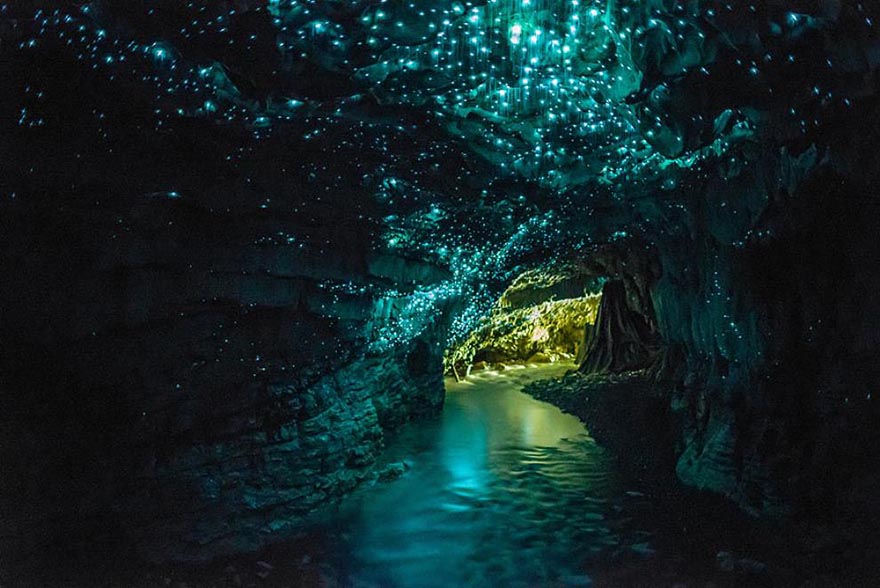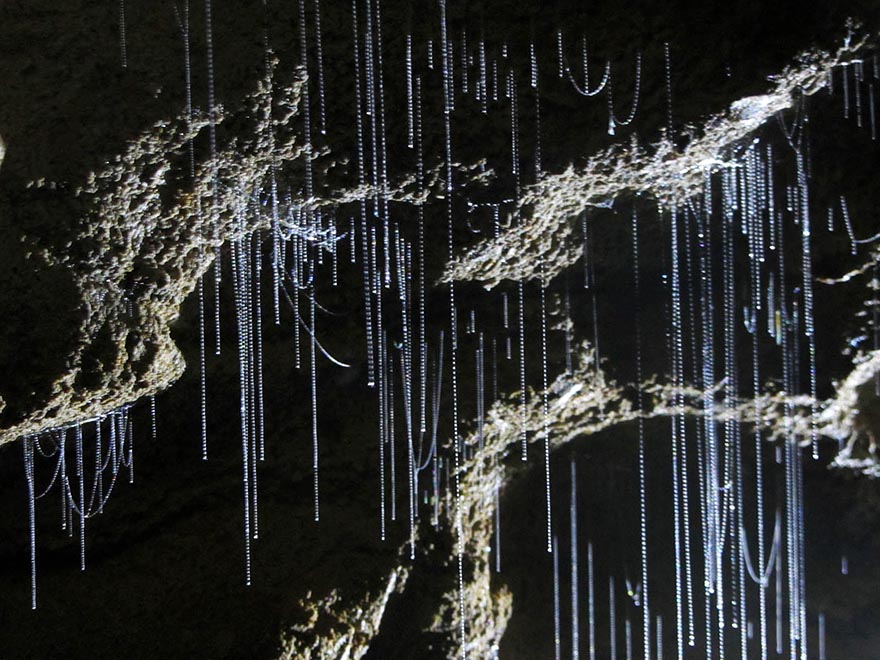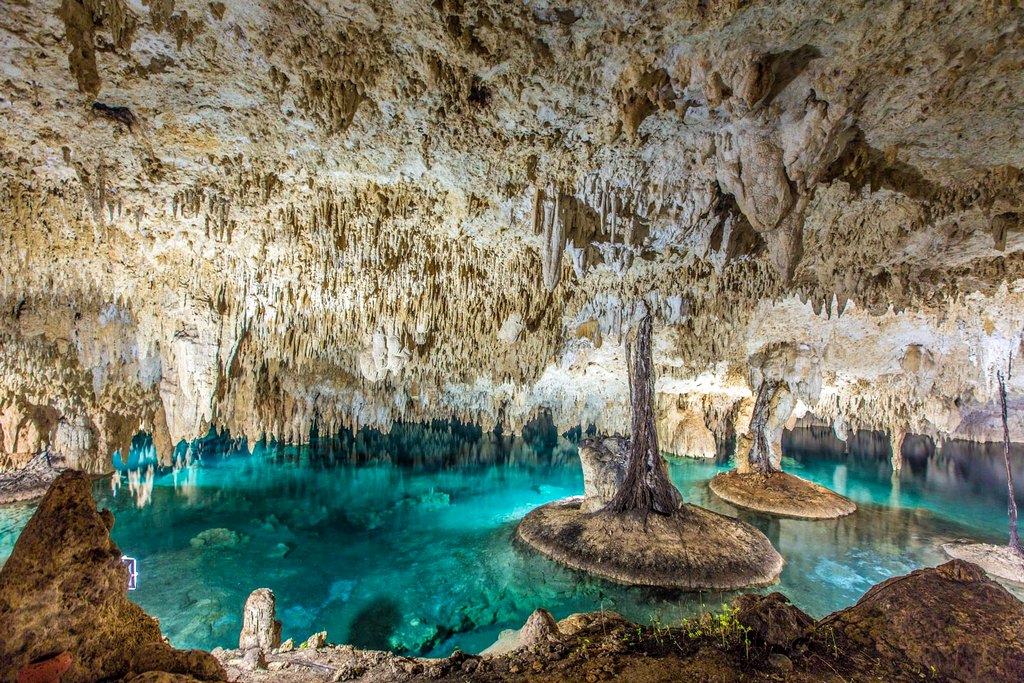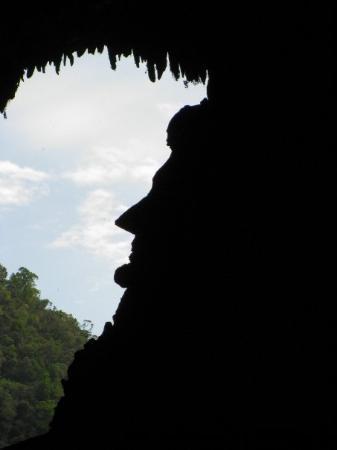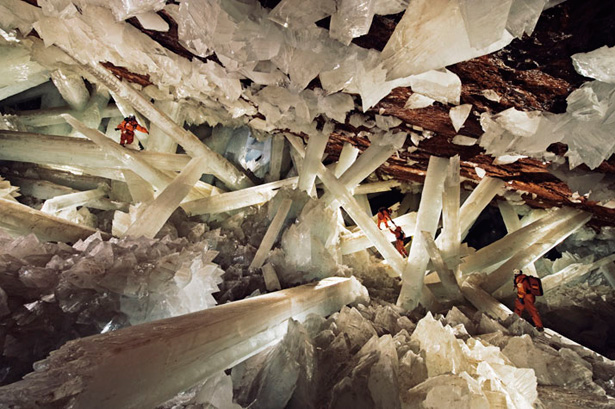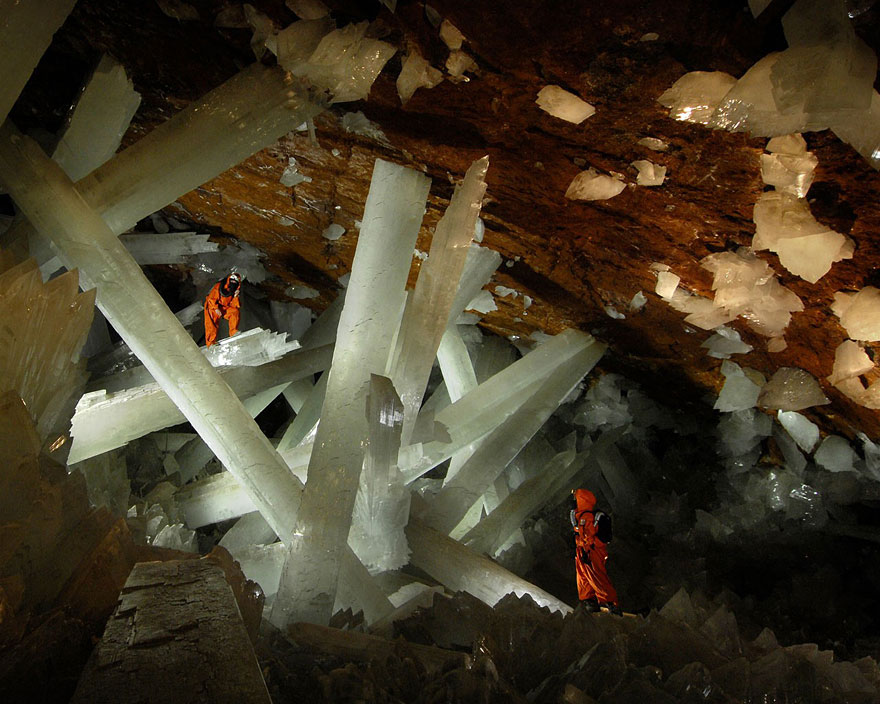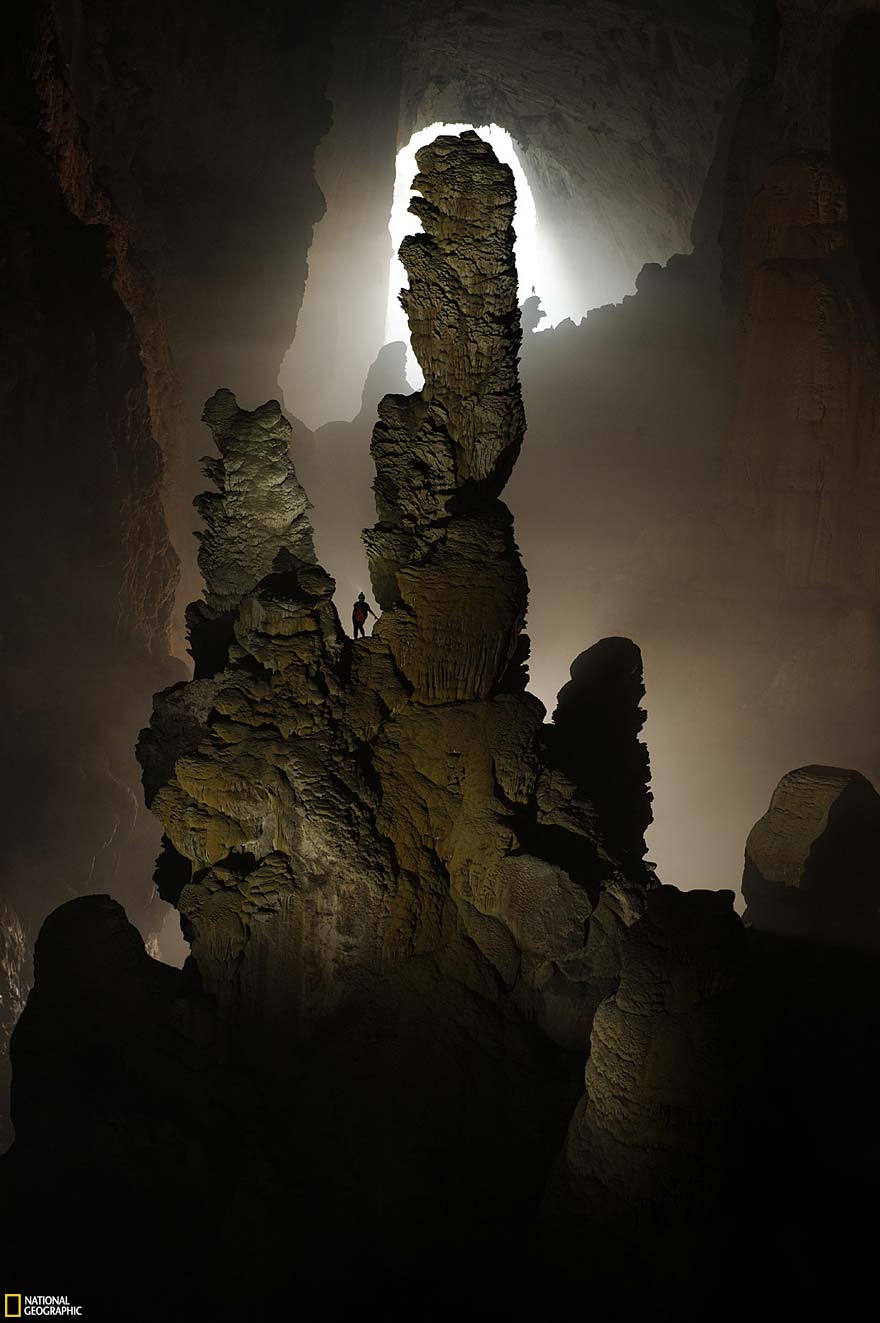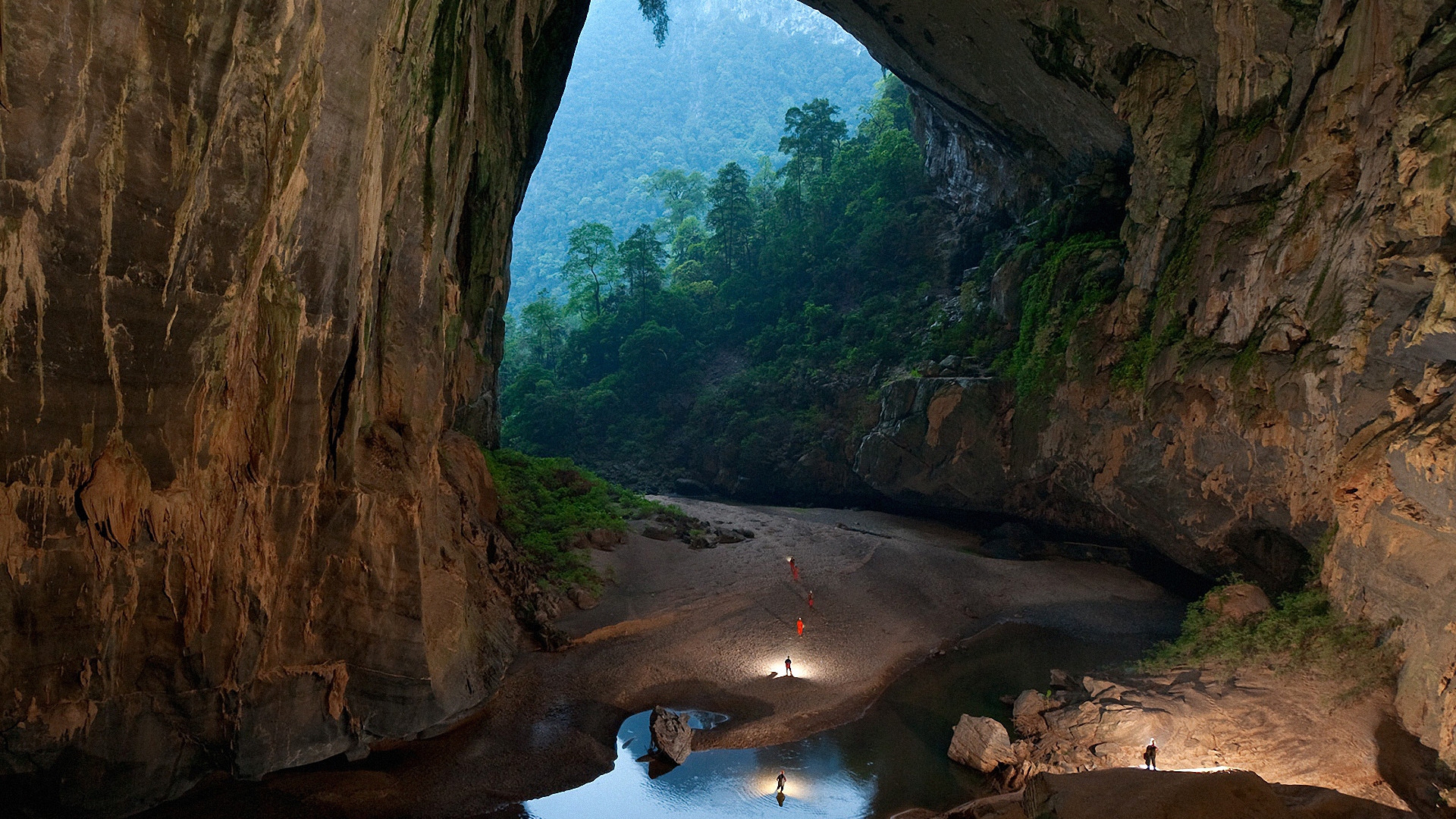Beneath the Earth’s surface lies an entire unexplored world. The caves once were the sacred and religious sites for humans, and now they are the source of great knowledge – caves can reveal valuable details of Earth’s geology and past climatic conditions. These fairy tale-like caves hide the beauty and splendor, but many of them are closed for public or difficult to access. On the other hand, some of them are famous touristic sites with organized tours and underground walks. Take a look at some of the world’s most incredible caves.
Mammoth Cave, Kentucky, United States
Mammoth Cave is the longest cave system known in the world with 405 miles (652 km) of surveyed passageways explored so far. New caverns are chambers are being constantly discovered within the twisted labyrinth of the Mammoth Cave. The cave is located in the Mammoth Cave National Park, established in 1941. It became a World Heritage Site 40 years later, and an international Biosphere Reserve in 1990. It is a widely known tourist attraction, with nearly 400,000 tourists passing through the cave each year. The cave is suitable for visiting all year-round since the temperature in it remains the same during every month. Besides underground walks, tourists can see some notable and popular cave features and experience various tours – Grand Avenue, Frozen Niagara, Green River, Fat Man’s Misery, River Styx Spring Trail, Frozen Niagara Tour, Wild cave tour etc. It is a common misleading that the cave got its name by fossil remains of mammoth – no mammoth fossils have ever been found in this cave.
Waitomo Glowworms Cave, New Zealand
Local Maori people had known about this cave for a long time, but the first official exploration conducted by a foreigner – an English surveyor – was in 1887. When the surveyor Fred Mace had entered the cave, carrying only a candle, he noticed a twinkling light coming from the ceiling. Many years after, these glowing strands are still the most recognizable feature of Waitomo Caves. The cave is actually a home of various insects, but the most renowned species is Arachnocampa luminosa, commonly known as New Zealand glowworm – a species of fungus endemic to New Zealand. The glowworms hang from the cave ceiling, glowing and twinkling to attract predators. The glowing is an effect of many chemical reactions in the glowworm’s organism.
Sac Actun Cave, Yucatan peninsula, Mexico
Sac Actun Cave System is the longest surveyed underwater cave system in the world. It is also the second-longest cave in the world, and with Sistema Dos Ojos, this cave is 319 km (198 mi) long. It is situated on the Yucatan peninsula, Mexico, along the Carribean coast. Translated from Mayan, “The White Cave” was a sacred place to native Indians of Yucatan. The cave was discovered in 1989. Geological studies suggest that the cave was formed about 65 million years ago, during the meteorite fall which caused various changes to the Erath’s surface. The cave is well-known among divers – they claim that diving in the caverns of Sac Actun is breathtaking and incredible, and certainly a unique experience. The cave is a home of several species adapted to the dark of underground waters – giant shrimps, catfish, and freshwater crayfish.
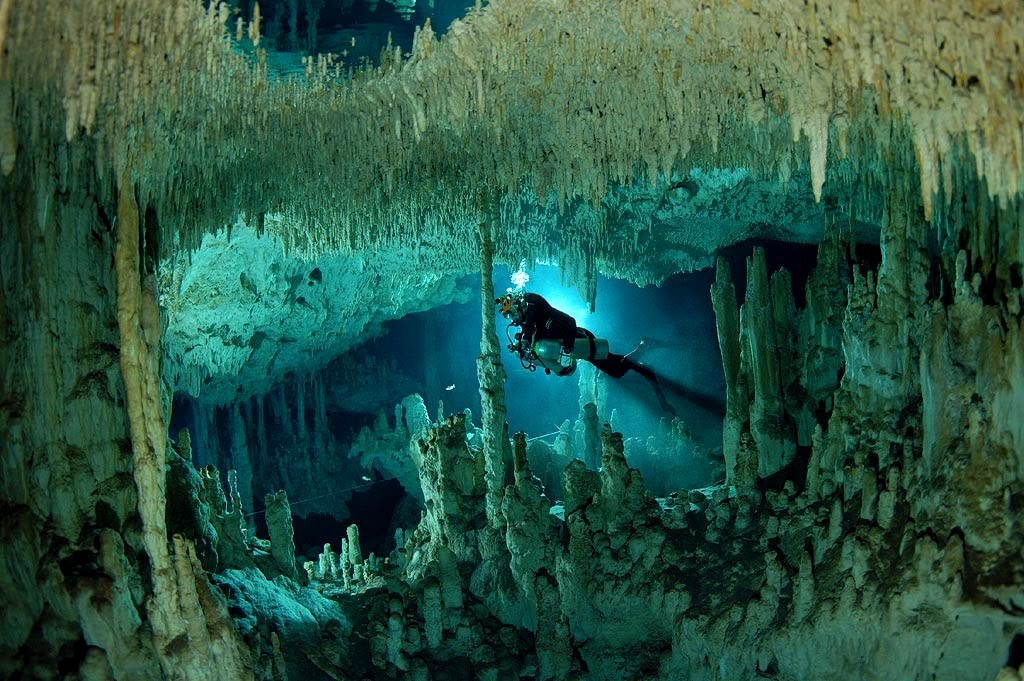
Cameraman filming in flooded caves in the Yucatan, Mexico. Image credits: Gavin Newman/feel-planet.com
The Mulu Caves, Borneo, Malaysia
The famous Mulu Caves, the top tourist attraction in Malasia, are located in the Gunung Mulu National Park in Borneo. This cave system was holding a world’s record for the largest cave chamber for many years. The Sarawak Chamber is nearly 2,000 feet (609 m) long and over 260 (70 m) feet high. It has been said that the chamber is so big that it could accommodate about 40 Boeing 747s, without overlapping their wings. The cave system is a UNESCO World Heritage Site. The Mulu Caves are located in the rainforest and only accessible by airplane. Among many limestone formations, flora and fauna species, there is one cave feature that is very interesting to visitors – so-called Abraham Lincoln rock. The rock at the entrance distinctly resembles Lincoln’s profile.
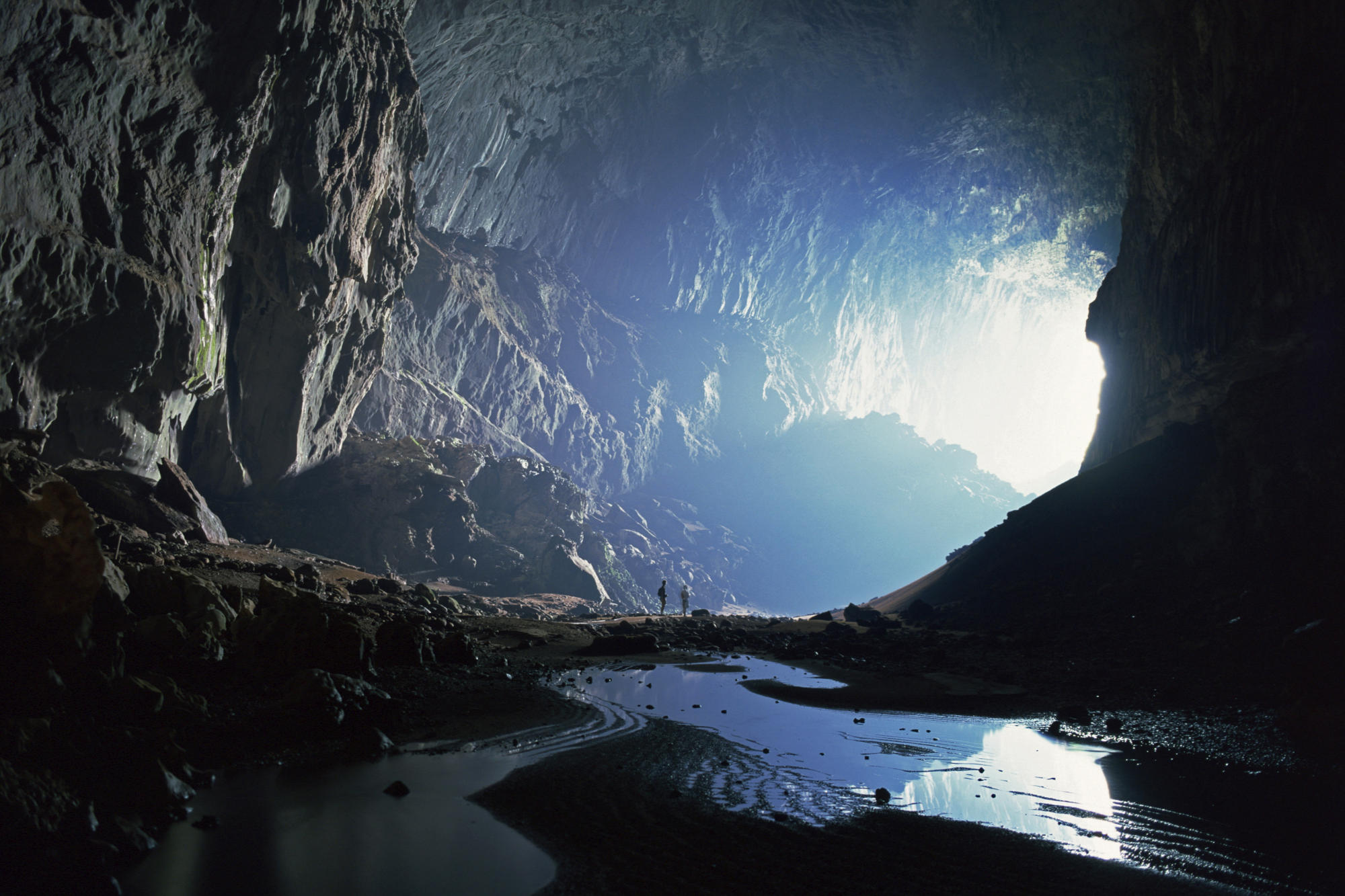
Tiny figures show the scale of the Deer cave looking back to the entrance of the Deer cave, Mulu National Park, Sarawak, Borneo, Malaysia, Southeast Asia.
Cave of The Crystals, Mexico
This magnificent cave, also known as The Crystal Palace, was discovered in 2000 when miners were excavating a tunnel for Naica Mine in the northern Mexico. Since then, The Crystal Cave became widely famous for its extraordinary feature – giant selenite crystals situated in the main chamber of the cave. One of the largest cave crystals found is 11 m (36 feet) long, 4 m (13 feet) wide and 55 tons in weight. The Crystal Cave is horseshoe-shaped and its floor is covered with perfectly faceted crystalline blocks. The cave is located 300 m (980 ft) below the surface. Due to very high air temperatures inside the cave (58 °C or 136 °F) and almost 99 percent humidity, the cave still remains mostly unexplored. But, sadly, these magnificent crystals deteriorate in the air, so the researchers of the Naica Project are exploring, studying and attempting to visually document the crystals before they deteriorate further.
Son Doong Cave, Vietnam
Son Doong Cave in Vietnam is one of the most solitary places on the Earth. Though the cave became internationally known in 2009 and opened to the public in 2013, the cave is still quite unexplored. Son Doong Cave, located in the Nha-Ke Bang National Park in Vietnam is the oldest karst system in Asia, between 400-450 million years old. The cave is surrounded by jungle, and it is filled with many mesmerizing wonders – from isolated ecosystems to various geological formations such as enormous stalagmites rising from the ground and statuesque stalactites hanging from the ceiling. It is 5 km long, but some of the cave’s sections reach up to 656 feet (200 m) tall and 492 feet (150 m) wide. It has been said that 40 skyscrapers could fit into this cave’s chamber. With a total measured volume of 38.5 million cubic meters, Song Doong Cave surpasses famous Deer Cave in Malaysia, which was considered to be the previous record holder. The cave also holds another record – the tallest stalagmite ever encountered is found in the Song Doong Cave and it is up to 262 feet (80 m) high.


